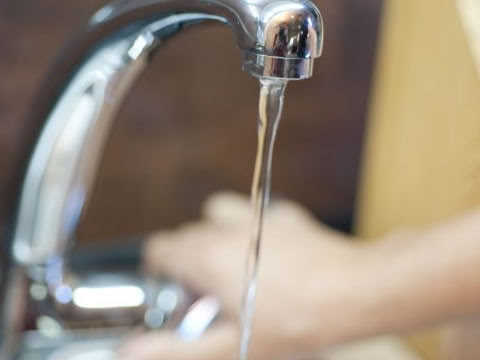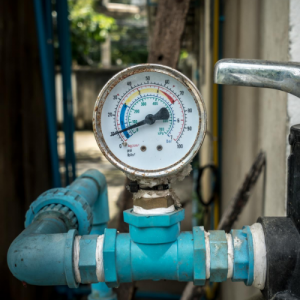Every person will have their own unique piece of advice on the subject of 9 Reasons for Low Water Pressure in Your House.

Low tide pressure in your home can be a discouraging trouble, affecting everything from bathing to cleaning meals. If you're experiencing weak water flow, there are several possible reasons and options to explore. In this overview, we'll discuss typical reasons for low tide pressure and functional actions to attend to the problem properly.
Intro to Low Water Stress
Low water pressure happens when the circulation of water from your taps, showers, and other components is weaker than common. This can make daily jobs much more challenging and much less reliable. Comprehending the causes of low water pressure is essential to finding the right option.
Usual Reasons For Low Water Pressure
Faulty Pressure Regulatory Authorities
Stress regulators are accountable for preserving regular water stress in your home. If they malfunction, it can lead to low water pressure or unequal flow throughout your house.
Metropolitan Water Supply Issues
Occasionally, the trouble exists outside your home. Community water supply concerns, such as main line leakages or upkeep job, can temporarily decrease water pressure in your area.
Pipeline Obstructions
Over time, pipelines can come to be clogged with mineral deposits, debris, or particles, restricting the flow of water. This is an usual issue in older homes with galvanized steel pipes.
Deterioration
Corrosion within pipes can lead to leakages and reduced water pressure. Rust build-up can restrict water circulation, especially in maturing plumbing systems.
Just How to Identify Low Tide Stress
Checking Pipelines
Evaluate visible pipes for indications of leaks, deterioration, or obstructions. Pay attention to any unusual noises, such as knocking or rattling pipes, which could suggest issues within the plumbing system.
Consulting with a Plumber
If you're unable to determine the cause of low tide pressure, think about working with a professional plumber to conduct an extensive examination. They can determine underlying concerns and recommend ideal services.
Checking Taps and Components
Begin by testing the water pressure at different taps and fixtures throughout your home. If the concern is separated to specific areas, it might indicate localized issues.
Do It Yourself Solutions to Fix Low Tide Pressure
Flushing Water Heater
Sediment build-up in the hot water heater can limit flow and minimize performance. Flushing the storage tank regularly helps remove debris and maintain optimal efficiency.
Inspecting Pressure Regulatory Authority
Make sure that the pressure regulatory authority is working appropriately. Readjusting or changing the regulatory authority can assist restore correct water pressure throughout your home.
Cleansing Aerators and Showerheads
Mineral deposits can build up in aerators and showerheads, decreasing water flow. Eliminate and cleanse these components frequently to enhance water stress.
Clearing Clogs in Pipes
For small obstructions, attempt utilizing a plumbing serpent or chemical drain cleaner to clear obstructions in pipelines. Beware when using chemicals and follow security standards.
When to Call a Professional Plumber
If do it yourself initiatives fall short to fix the concern or if you believe considerable plumbing problems, it's ideal to seek assistance from a certified plumber. They have the proficiency and tools to deal with complicated issues safely and efficiently.
Safety Nets to Preserve Water Stress
Setting Up a Stress Booster
Take into consideration installing a pressure booster pump to improve water stress in locations with continually low circulation. This can be particularly beneficial for multi-story homes or residential or commercial properties with high-demand components.
Tracking Water Usage
Bear in mind water usage practices and stay clear of ill-using the plumbing system. Straightforward modifications, such as staggering showers and laundry lots, can assist preserve ample water pressure.
Normal Maintenance
Set up routine maintenance for your plumbing system to avoid concerns such as corrosion, leaks, and blockages. Attending to small troubles early can aid avoid more significant repair work in the future.
Final thought
Dealing with low water stress can be irritating, yet determining the underlying causes and carrying out ideal services can bring back optimum circulation throughout your home. Whether it's cleansing aerators, checking pipes, or speaking with a plumber, taking proactive steps can guarantee a steady supply of water for your daily needs.
FOUR WAYS TO FIX LOW WATER PRESSURE NOW
Turning on a shower or faucet only to find the water comes out in a sad, slow drizzle is never a good feeling. How exactly are you supposed to wash a pan or take a quick shower when it takes 10 minutes just to rinse off a little soap? The good news is that when your water pressure is bad, there's always a cause: typically one that can be easily fixed. Here are some of the most common causes of low pressure and what you can do to fix the issue:
DEBRIS AND MINERAL DEPOSIT BUILDUPS
If you notice low water pressure from just one or two of the fixtures in your house, the problem likely has to do with debris buildup. Water is full of minerals and other debris, all of which can accumulate in your pipes and on your fixtures. This can cause a blockage that affects how much water flows through. To fix this, try filling a small plastic bag with white vinegar, and use a rubber band to hang it around your showerhead or faucet. Let the head of the fixture soak for a few hours, and the vinegar should loosen the deposits.
WATER LEAKS
Leaks are another common cause of low water pressure. If water is flowing out of your plumbing through a hole or crack before it can reach your fixture, the pressure coming out of the faucet or showerhead will be lower. A plumbing professional is your best bet for finding and repairing a leak in your water supply pipes.
Leaks are another common cause of low water pressure. If water is flowing out of your plumbing through a hole or crack before it can reach your fixture, the pressure coming out of the faucet or showerhead will be lower. A plumbing professional is your best bet for finding and repairing a leak in your water supply pipes.
A VALVE ISSUE
If you have low water pressure throughout your home, check your main shut-off valve to make sure it's completely open. You may also want to see if there's a pressure-reducing valve installed. If there is, have a plumber help you adjust the settings to get the pressure you're looking for.
OTHERS USING WATER
Believe it or not, your low water pressure could be caused by your neighbors. If you notice low pressure at certain times of day, it may be because you and the people living next to you have similar schedules - when everyone is showering at the same time, the pressure will be lower in every home. Low pressure throughout the neighborhood may also be caused by an issue with your municipal water supply. If that's the case, call the supplier to see if they're working on the issue.
https://www.rotorooter.com/blog/water-leaking/low-water-pressure-fixes/

I stumbled upon that content on Dealing with Low Water Pressure in Your Home while doing a lookup on the internet. Enjoyed reading our article? Please quickly share it. Let another person check it out. Thanks for going through it.
Book
Comments on “Recommended Techniques for Rectifying Low Water Pressure in Your Home”